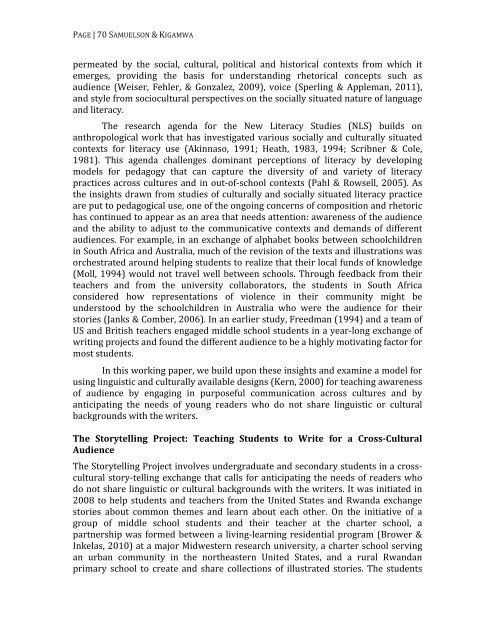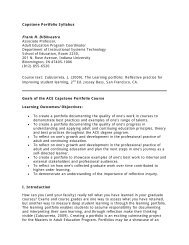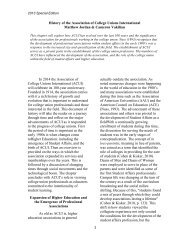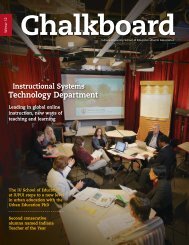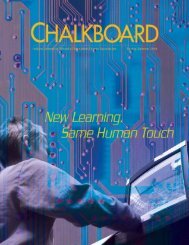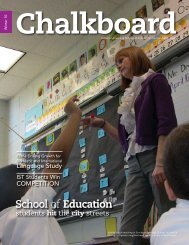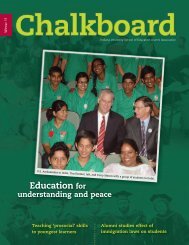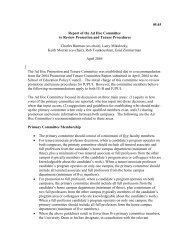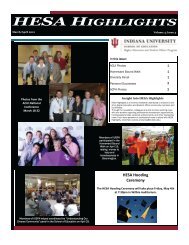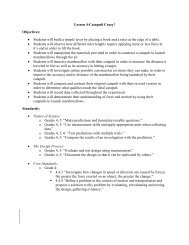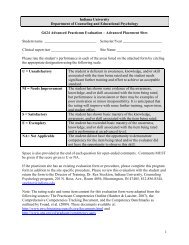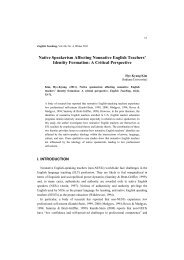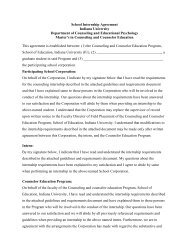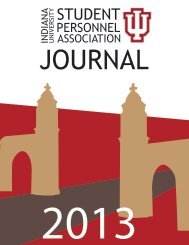Working Papers in Literacy, Culture, and Language Education
Working Papers in Literacy, Culture, and Language Education
Working Papers in Literacy, Culture, and Language Education
You also want an ePaper? Increase the reach of your titles
YUMPU automatically turns print PDFs into web optimized ePapers that Google loves.
PAGE | 70 SAMUELSON & KIGAMWApermeated by the social, cultural, political <strong>and</strong> historical contexts from which itemerges, provid<strong>in</strong>g the basis for underst<strong>and</strong><strong>in</strong>g rhetorical concepts such asaudience (Weiser, Fehler, & Gonzalez, 2009), voice (Sperl<strong>in</strong>g & Appleman, 2011),<strong>and</strong> style from sociocultural perspectives on the socially situated nature of language<strong>and</strong> literacy.The research agenda for the New <strong>Literacy</strong> Studies (NLS) builds onanthropological work that has <strong>in</strong>vestigated various socially <strong>and</strong> culturally situatedcontexts for literacy use (Ak<strong>in</strong>naso, 1991; Heath, 1983, 1994; Scribner & Cole,1981). This agenda challenges dom<strong>in</strong>ant perceptions of literacy by develop<strong>in</strong>gmodels for pedagogy that can capture the diversity of <strong>and</strong> variety of literacypractices across cultures <strong>and</strong> <strong>in</strong> out‐of‐school contexts (Pahl & Rowsell, 2005). Asthe <strong>in</strong>sights drawn from studies of culturally <strong>and</strong> socially situated literacy practiceare put to pedagogical use, one of the ongo<strong>in</strong>g concerns of composition <strong>and</strong> rhetorichas cont<strong>in</strong>ued to appear as an area that needs attention: awareness of the audience<strong>and</strong> the ability to adjust to the communicative contexts <strong>and</strong> dem<strong>and</strong>s of differentaudiences. For example, <strong>in</strong> an exchange of alphabet books between schoolchildren<strong>in</strong> South Africa <strong>and</strong> Australia, much of the revision of the texts <strong>and</strong> illustrations wasorchestrated around help<strong>in</strong>g students to realize that their local funds of knowledge(Moll, 1994) would not travel well between schools. Through feedback from theirteachers <strong>and</strong> from the university collaborators, the students <strong>in</strong> South Africaconsidered how representations of violence <strong>in</strong> their community might beunderstood by the schoolchildren <strong>in</strong> Australia who were the audience for theirstories (Janks & Comber, 2006). In an earlier study, Freedman (1994) <strong>and</strong> a team ofUS <strong>and</strong> British teachers engaged middle school students <strong>in</strong> a year‐long exchange ofwrit<strong>in</strong>g projects <strong>and</strong> found the different audience to be a highly motivat<strong>in</strong>g factor formost students.In this work<strong>in</strong>g paper, we build upon these <strong>in</strong>sights <strong>and</strong> exam<strong>in</strong>e a model forus<strong>in</strong>g l<strong>in</strong>guistic <strong>and</strong> culturally available designs (Kern, 2000) for teach<strong>in</strong>g awarenessof audience by engag<strong>in</strong>g <strong>in</strong> purposeful communication across cultures <strong>and</strong> byanticipat<strong>in</strong>g the needs of young readers who do not share l<strong>in</strong>guistic or culturalbackgrounds with the writers.The Storytell<strong>in</strong>g Project: Teach<strong>in</strong>g Students to Write for a CrossCulturalAudienceThe Storytell<strong>in</strong>g Project <strong>in</strong>volves undergraduate <strong>and</strong> secondary students <strong>in</strong> a crossculturalstory‐tell<strong>in</strong>g exchange that calls for anticipat<strong>in</strong>g the needs of readers whodo not share l<strong>in</strong>guistic or cultural backgrounds with the writers. It was <strong>in</strong>itiated <strong>in</strong>2008 to help students <strong>and</strong> teachers from the United States <strong>and</strong> Rw<strong>and</strong>a exchangestories about common themes <strong>and</strong> learn about each other. On the <strong>in</strong>itiative of agroup of middle school students <strong>and</strong> their teacher at the charter school, apartnership was formed between a liv<strong>in</strong>g‐learn<strong>in</strong>g residential program (Brower &Inkelas, 2010) at a major Midwestern research university, a charter school serv<strong>in</strong>gan urban community <strong>in</strong> the northeastern United States, <strong>and</strong> a rural Rw<strong>and</strong>anprimary school to create <strong>and</strong> share collections of illustrated stories. The students


